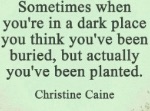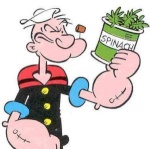Search
Latest topics
» Interesting Marketing for Compostby sanderson Today at 3:24 am
» Cooked worms?
by sanderson Today at 3:21 am
» Indoor Lighting for Kitchen Herbs & Lettuce
by sanderson Today at 3:16 am
» Happy Birthday!!
by sanderson Today at 3:14 am
» Catalog season has begun!
by sanderson Today at 3:13 am
» Mark's first SFG
by sanderson Today at 3:08 am
» Happy Thanksgiving from the USA
by sanderson Today at 3:07 am
» Kiwi's SFG Adventure
by sanderson Today at 3:05 am
» N & C Midwest: Nov. Dec. 2024
by OhioGardener 11/26/2024, 4:08 pm
» Butterbaby Hybrid Squash (Butternut)
by Scorpio Rising 11/24/2024, 8:19 pm
» How does green turn to brown?
by OhioGardener 11/21/2024, 4:58 pm
» Ohio Gardener's Greenhouse
by OhioGardener 11/21/2024, 12:16 pm
» Tree roots, yeeessss.....
by sanderson 11/20/2024, 2:21 am
» The SFG Journey-Biowash
by has55 11/19/2024, 7:37 pm
» What are you eating from your garden today?
by OhioGardener 11/19/2024, 8:27 am
» New SFG gardener in Auckland
by KiwiSFGnewbie 11/16/2024, 11:25 pm
» Thanksgiving Cactus
by OhioGardener 11/12/2024, 5:40 pm
» Need Garden Layout Feedback
by markqz 11/9/2024, 9:16 pm
» Thai Basil
by Scorpio Rising 11/8/2024, 8:52 pm
» How best to keep a fallow SFG bed
by KiwiSFGnewbie 11/8/2024, 8:11 pm
» Preserving A Bumper Tomato Harvest with Freezing vs Canning
by plantoid 11/7/2024, 11:36 am
» What Have You Picked From Your Garden Today
by OhioGardener 11/5/2024, 2:29 pm
» Greetings from Southeastern Wisconsin
by sanderson 11/5/2024, 2:01 pm
» Spinning Compost Bin-need some ideas
by rtfm 11/2/2024, 7:49 pm
» Growing fruit trees in Auckland
by OhioGardener 10/31/2024, 4:23 pm
» Vermiculite -- shipping sale through 10/31/2024
by markqz 10/30/2024, 2:27 pm
» N & C Midwest: October 2024
by Scorpio Rising 10/30/2024, 10:38 am
» Old Mulch and Closing Beds for Winter
by sanderson 10/26/2024, 11:00 pm
» Hello from Land of Umpqua, Oregon Zone 8b
by sanderson 10/25/2024, 3:14 pm
» Hello everyone!
by SFGHQSTAFF 10/24/2024, 3:22 pm
Google
Member Collaboration: Seed Saving
+9
Squat_Johnson
Goosegirl
Furbalsmom
littlesapphire
genes
BackyardBirdGardner
AprilakaCCIL
boffer
middlemamma
13 posters
Page 1 of 2
Page 1 of 2 • 1, 2 
 Re: Member Collaboration: Seed Saving
Re: Member Collaboration: Seed Saving
I'd love to contribute! But I have no personal experience. Can I just do a lot of research and post what I find?
 Re: Member Collaboration: Seed Saving
Re: Member Collaboration: Seed Saving
I've never saved a seed in my life. But I bet could save a carrot seed, now that I"ve read about it and put the ideas into my own words.
It's a mini-educational exercise that can give us all a little more confidence in the long run, that we have, or can do, or can learn to do what it takes to take some responsibility for providing for ourselves in the worst of times.
Or, it's just something we can do to save a little money.
Pick a veggie you're comfortable with, or even one that seems foreign to you, read up on it, then try to tell me what I need to do to save its seeds. Then try following your own advice when the weather cycle makes it possible to grow the veggie you picked. There's no telling what we all might learn in the long run!
It's a mini-educational exercise that can give us all a little more confidence in the long run, that we have, or can do, or can learn to do what it takes to take some responsibility for providing for ourselves in the worst of times.
Or, it's just something we can do to save a little money.
Pick a veggie you're comfortable with, or even one that seems foreign to you, read up on it, then try to tell me what I need to do to save its seeds. Then try following your own advice when the weather cycle makes it possible to grow the veggie you picked. There's no telling what we all might learn in the long run!
 Re: Member Collaboration: Seed Saving
Re: Member Collaboration: Seed Saving
OK boofer I want to do beets. I'm growing them now in my very first sfg box.

genes- Posts : 179
Join date : 2011-01-26
Location : CA
 Re: Member Collaboration: Seed Saving
Re: Member Collaboration: Seed Saving
How to save pepper seeds
Peppers are probably one of the easiest plants to save seeds from, and a great place to start for beginners. Since peppers are self pollinating, there is little chance for cross pollination. However, it can happen, and if you're trying to save bell peppers and your neighbor is growing habanero peppers, you may end up with some unexpectedly spicy peppers next year!
To prevent cross pollination, create a small bag made from tulle or another type of fine mesh material, and tie around unopened blossoms. Once blossoms open, make sure to gently tap them to ensure proper pollination. After the blossoms fall off and small peppers appear, you can remove the bags and tie a string around the fruit to remind yourself of which pepper you want to save for seeds.
Peppers must be fully mature for seed harvesting. For a lot of varieties, this means they must be red; of course, each variety is a different color so make sure to check your original seed package to know what color the fruit should be. If you know a frost is coming but the pepper hasn't finished maturing, you can pull the entire plant out of the ground, and hang it up in a cool dark location until the peppers have matured.
To harvest the seeds, simply slice open the pepper, either along the side or the bottom, and scoop them out. Lay them out on paper in a cool dark place until they're completely dry, or until the seeds break when you bend them in half.
ALWAYS wash your hands after handling hot peppers!
Peppers are probably one of the easiest plants to save seeds from, and a great place to start for beginners. Since peppers are self pollinating, there is little chance for cross pollination. However, it can happen, and if you're trying to save bell peppers and your neighbor is growing habanero peppers, you may end up with some unexpectedly spicy peppers next year!
To prevent cross pollination, create a small bag made from tulle or another type of fine mesh material, and tie around unopened blossoms. Once blossoms open, make sure to gently tap them to ensure proper pollination. After the blossoms fall off and small peppers appear, you can remove the bags and tie a string around the fruit to remind yourself of which pepper you want to save for seeds.
Peppers must be fully mature for seed harvesting. For a lot of varieties, this means they must be red; of course, each variety is a different color so make sure to check your original seed package to know what color the fruit should be. If you know a frost is coming but the pepper hasn't finished maturing, you can pull the entire plant out of the ground, and hang it up in a cool dark location until the peppers have matured.
To harvest the seeds, simply slice open the pepper, either along the side or the bottom, and scoop them out. Lay them out on paper in a cool dark place until they're completely dry, or until the seeds break when you bend them in half.
ALWAYS wash your hands after handling hot peppers!
 Re: Member Collaboration: Seed Saving
Re: Member Collaboration: Seed Saving
I'm still working on mine 

genes- Posts : 179
Join date : 2011-01-26
Location : CA
 Re: Member Collaboration: Seed Saving
Re: Member Collaboration: Seed Saving
You just can't say that enough. This spring our favorite Peruvian Restaurant Owner gave us one fresh Aji Amarillo pepper that had been imported from Peru. We had told him we wanted to grow the peppers ourselves.littlesapphire wrote:ALWAYS wash your hands after handling hot peppers!
Trying to help me, my husband removed the seeds from the pepper and spread them out on paper towels to dry. He removed the seeds by hand, no gloves.
Even after washing his hands several times, he was outside working, became sweaty and wiped his eyes
 FIRE
FIRE 

Furbalsmom-
 Posts : 3138
Posts : 3138
Join date : 2010-06-10
Age : 77
Location : Coastal Oregon, Zone 9a, Heat Zone 2 :(
 Re: Member Collaboration: Seed Saving
Re: Member Collaboration: Seed Saving
Furbalsmom wrote:You just can't say that enough. .........littlesapphire wrote:ALWAYS wash your hands after handling hot peppers!
Even after washing his hands several times, he was outside working, became sweaty and wiped his eyes
FIRE

Been there, done that!

GG

Goosegirl-
 Posts : 3424
Posts : 3424
Join date : 2011-02-16
Age : 59
Location : Zone 4A - NE SD
 Mammoth Melting Snow Peas
Mammoth Melting Snow Peas
OK, I am picking peas. That would make me a “pea picker”.
(Had to look that up, I remember seeing Tennessee Ernie Ford from "Hee Haw" as a kid, Wikipedia tells me that “Pea Picker” was a derogatory term, describing the poor migrant workers in the Great Depression.) ok, already off track…
Anyway, I had an incredible experience this spring with Mammoth Melting Snow Peas. This is now my favorite food from the garden. I ate them in salads, stir fried anything, raw in the garden, and even put a gallon or so in the freezer (just blanched for a minute, and put in an ice bath).
I planted these with snow on the ground on Feb 28th. They were very early to sprout, and did great. At the end of their spring season, I saved all the pods that had gotten tough, brown and leathery. I let the pods dry out a bit, and then shelled them and put them on the hearth for a week to get really dry. They are in the crisper of the fridge, and I have enough to share/trade with a bunch of people. I am going to plant some in the coming days for a fall crop attempt.
So, now after saving seeds,( and later researching how to do it properly) It seems that I did it right. Peas self-pollinate, and there is not a great risk of cross-fertilization. They need to be thoroughly dried, and stored as any other seed at a cool temp, preferably in a refrigerator. From what I have read, they don’t keep as long as some other seeds.
(Had to look that up, I remember seeing Tennessee Ernie Ford from "Hee Haw" as a kid, Wikipedia tells me that “Pea Picker” was a derogatory term, describing the poor migrant workers in the Great Depression.) ok, already off track…
Anyway, I had an incredible experience this spring with Mammoth Melting Snow Peas. This is now my favorite food from the garden. I ate them in salads, stir fried anything, raw in the garden, and even put a gallon or so in the freezer (just blanched for a minute, and put in an ice bath).
I planted these with snow on the ground on Feb 28th. They were very early to sprout, and did great. At the end of their spring season, I saved all the pods that had gotten tough, brown and leathery. I let the pods dry out a bit, and then shelled them and put them on the hearth for a week to get really dry. They are in the crisper of the fridge, and I have enough to share/trade with a bunch of people. I am going to plant some in the coming days for a fall crop attempt.
So, now after saving seeds,( and later researching how to do it properly) It seems that I did it right. Peas self-pollinate, and there is not a great risk of cross-fertilization. They need to be thoroughly dried, and stored as any other seed at a cool temp, preferably in a refrigerator. From what I have read, they don’t keep as long as some other seeds.
Last edited by Squat_Johnson on 8/8/2011, 12:52 pm; edited 2 times in total (Reason for editing : format)

Squat_Johnson-
 Posts : 440
Posts : 440
Join date : 2010-05-25
Location : Beaver Dam, Kentucky, zone 6a
 beets
beets
okay boofer here it is
Beets are a biennial. To save seed from beets you'll have to plant 20 to 30 plants (2 squares at 16 per) to leave in the ground to over-winter. You can harvest tasty beet greens for the first part of the season, and you can crowd the plants a bit. You don't have to pamper them with lots of room, water and fertilizers to get plenty of seeds in the spring—just make sure they're big enough to get through the winter and re-sprout. (If you have a square or two that didn't bulb properly, and don't need the space, you could try over-wintering them.)
Beets are wind pollinated and have very light pollen; they need to be isolated from the same species (Swiss chard is the most common similar species) 3-5 miles to be safe. The other safe option is to bag the 20-30 beet plants together so they can pollinate each other. The bag should be windproof to prevent windblown pollen from entering. Having 20-30 plants bagged together typically allows a female:male ratio of 2:1.
Allow beet seeds to fully mature and become dry on the plants before harvesting. After final drying, the seeds can be easily rubbed off the stems. Beet seeds will last for up to 5 years if properly stored.
Beets are a biennial. To save seed from beets you'll have to plant 20 to 30 plants (2 squares at 16 per) to leave in the ground to over-winter. You can harvest tasty beet greens for the first part of the season, and you can crowd the plants a bit. You don't have to pamper them with lots of room, water and fertilizers to get plenty of seeds in the spring—just make sure they're big enough to get through the winter and re-sprout. (If you have a square or two that didn't bulb properly, and don't need the space, you could try over-wintering them.)
Beets are wind pollinated and have very light pollen; they need to be isolated from the same species (Swiss chard is the most common similar species) 3-5 miles to be safe. The other safe option is to bag the 20-30 beet plants together so they can pollinate each other. The bag should be windproof to prevent windblown pollen from entering. Having 20-30 plants bagged together typically allows a female:male ratio of 2:1.
Allow beet seeds to fully mature and become dry on the plants before harvesting. After final drying, the seeds can be easily rubbed off the stems. Beet seeds will last for up to 5 years if properly stored.

genes- Posts : 179
Join date : 2011-01-26
Location : CA
 Re: Member Collaboration: Seed Saving
Re: Member Collaboration: Seed Saving
F1 hybrids and GMO seeds will not breed true, you'll get something other than the parent plant..assuming it even germinates. I'm sure that will be in the final document, but if any other people are like me, they'll skip that kind of thing and just go straight to saving seeds.
I'll see what hasn't been taken tomorrow and pick something to help this along. Great idea! When I first read this I thought someone was starting a seed exchange, but this is just as good. Self sufficiency at its finest.
I'll see what hasn't been taken tomorrow and pick something to help this along. Great idea! When I first read this I thought someone was starting a seed exchange, but this is just as good. Self sufficiency at its finest.

Unmutual
Certified SFG Instructor-
 Posts : 391
Posts : 391
Join date : 2011-04-23
Age : 52
Location : Greater New Orleans Area Westbank(Zone 9b)
 Re: Member Collaboration: Seed Saving
Re: Member Collaboration: Seed Saving
Looking forward to your contribution.Unmutual wrote: When I first read this I thought someone was starting a seed exchange, but this is just as good. Self sufficiency at its finest.
Are you familiar with the seed exchange database?
https://squarefoot.forumotion.com/portal?pid=4
 Re: Member Collaboration: Seed Saving
Re: Member Collaboration: Seed Saving
Without further a due, the cucumber!
Step 1: Let the cucumber fully ripen on the vine. The cucumber will turn from a dark green to a yellow color.
Step 2: Slice the cucumber down the middle lengthwise and, using a spoon, scrape out the seeds and the jelly-like stuff(the jelly-like stuff inhibits seed germination, this is why you have to soak a lot of different seeds when saving them).
Step 3: Place the seeds and the jelly-stuff into a jar with some water. This should start fermenting, and the mature seeds should sink to the bottom over the next few days.
Step 4: Scoop out the scum and dry off just the seeds that sank to the bottom. Immature seeds will generally float to the top.
Step 5: Store seeds in a cool, dry place and don't forget to label the pack with the date and cultivar!
Notes: I see that some places say that the seed can last for 8-10 years, but the germination rates would drop significantly after the first year or two. All this means is that it may take more seed to start a new planting, but that doesn't matter since you got yours for free.
Also, Seedsaver.org specifies that if other varieties are of the same plant(or sometimes even a close relative) are growing nearby(1/2 mile for cukes), then you have to somehow separate them(maybe with a floating row cover), so they are pollinated by other plants of the same cultivar. And yes, apparently some plants can inbreed which isn't a good thing. If you are doing this professionally, you'll want multiple plantings of the same cultivar and you'd want to keep them from being pollinated by something else. Seedsaver.org suggests 6 plantings, in isolation, for good seed. I'm fairly sure that for personal use, a single cucumber fruit will suffice.
Hand Pollination: Female flowers will have a tiny cucumber between the flower and the vine. This actually is the plants ovary. Male plants will not have this, it will just be a flower on the vine. Pinch off(or cut) a male flower. Carefully remove all the petals without disturbing the center of the flower. The center of the flower is where the pollen is, and any serious disruption can shake off the pollen..be careful. Take the male flower to the female flower and push it(carefully, we don't want to mash them together) inside of the female flower. Turn the male flower a little and it should be pollinated. I'm not sure how many times you can reuse a male flower for this.
Seedsaver.org says:
(All cucumbers except Armenian cucumbers)
PLANT: Separate two different cucumber varieties by at least 1/2 mile to ensure purity. Experienced, home, seed savers can grow more than one variety at a time in a single garden by using hand pollinating techniques. (See page 36.)
FLOWER: Cucumbers are mostly monoecious with separate male and female flowers on each plant. Female flowers can be identified by locating the ovary (a small looking cucumber) at the base of the flower. Cucumber vines will produce the greatest amount of female flowers when day length shortens to approximately 11 hours per day. Fruits will be aborted during dry spells and very hot weather.
INBREEDING DEPRESSION: Although inbreeding depression is not usually noticeable in cucumbers, seeds should be saved from at least 6 cucumbers on 6 different plants.
HARVEST: Cucumbers raised for seed cannot be eaten. They should be left to ripen at least 5 weeks after eating stage until they have turned a golden color. First, light frost of the season will blacken vines and make cucumbers easier to find. Undamaged fruits can be stored in cool, dry place for several weeks to finish ripening.
PROCESS: Slice fruit lengthwise and scrape seeds out with spoon. Allow seeds and jelly-like liquid to sit in jar at room temperature for 3 or 4 days. Fungus will start to form on top. Stir daily. Jelly will dissolve and good seeds will sink to bottom while remaining debris and immature seeds can be rinsed away. Spread seeds on a paper towel or screen until dry.
This from motherearthnews.com
How can I save seeds from cucumbers that I grow?
In order to save seeds from cucumbers, you must let them thoroughly ripen on the vine. They will enlarge and turn yellow. They should stay on the vines until the vines are dead. Bring the cucumbers into the house and let them ripen further on a dry shelf in the pantry (or someplace out of direct sunlight). When the cucumbers begin to turn soft, scoop out the seed mass and put it into a large jar of water. Let the seeds ferment for five days, thenseparate the scum from the good seeds that have sunken to the bottom. Rinse the seeds in a colander, then dry hem on screens for at least three weeks, or until the seed snaps when bent in half. Store the seed in airtight containers, label and date clearly. Store the containers in a cool, dark place free of humidity. Seed processed properly will remain good for at least eight to 10 years.
— William Woys Weaver, contributing editor, MOTHER EARTH NEWS and Gourmet magazines
I'm so growing heirlooms next year. I'll have to bookmark that page.
Step 1: Let the cucumber fully ripen on the vine. The cucumber will turn from a dark green to a yellow color.
Step 2: Slice the cucumber down the middle lengthwise and, using a spoon, scrape out the seeds and the jelly-like stuff(the jelly-like stuff inhibits seed germination, this is why you have to soak a lot of different seeds when saving them).
Step 3: Place the seeds and the jelly-stuff into a jar with some water. This should start fermenting, and the mature seeds should sink to the bottom over the next few days.
Step 4: Scoop out the scum and dry off just the seeds that sank to the bottom. Immature seeds will generally float to the top.
Step 5: Store seeds in a cool, dry place and don't forget to label the pack with the date and cultivar!
Notes: I see that some places say that the seed can last for 8-10 years, but the germination rates would drop significantly after the first year or two. All this means is that it may take more seed to start a new planting, but that doesn't matter since you got yours for free.
Also, Seedsaver.org specifies that if other varieties are of the same plant(or sometimes even a close relative) are growing nearby(1/2 mile for cukes), then you have to somehow separate them(maybe with a floating row cover), so they are pollinated by other plants of the same cultivar. And yes, apparently some plants can inbreed which isn't a good thing. If you are doing this professionally, you'll want multiple plantings of the same cultivar and you'd want to keep them from being pollinated by something else. Seedsaver.org suggests 6 plantings, in isolation, for good seed. I'm fairly sure that for personal use, a single cucumber fruit will suffice.
Hand Pollination: Female flowers will have a tiny cucumber between the flower and the vine. This actually is the plants ovary. Male plants will not have this, it will just be a flower on the vine. Pinch off(or cut) a male flower. Carefully remove all the petals without disturbing the center of the flower. The center of the flower is where the pollen is, and any serious disruption can shake off the pollen..be careful. Take the male flower to the female flower and push it(carefully, we don't want to mash them together) inside of the female flower. Turn the male flower a little and it should be pollinated. I'm not sure how many times you can reuse a male flower for this.
Seedsaver.org says:
(All cucumbers except Armenian cucumbers)
PLANT: Separate two different cucumber varieties by at least 1/2 mile to ensure purity. Experienced, home, seed savers can grow more than one variety at a time in a single garden by using hand pollinating techniques. (See page 36.)
FLOWER: Cucumbers are mostly monoecious with separate male and female flowers on each plant. Female flowers can be identified by locating the ovary (a small looking cucumber) at the base of the flower. Cucumber vines will produce the greatest amount of female flowers when day length shortens to approximately 11 hours per day. Fruits will be aborted during dry spells and very hot weather.
INBREEDING DEPRESSION: Although inbreeding depression is not usually noticeable in cucumbers, seeds should be saved from at least 6 cucumbers on 6 different plants.
HARVEST: Cucumbers raised for seed cannot be eaten. They should be left to ripen at least 5 weeks after eating stage until they have turned a golden color. First, light frost of the season will blacken vines and make cucumbers easier to find. Undamaged fruits can be stored in cool, dry place for several weeks to finish ripening.
PROCESS: Slice fruit lengthwise and scrape seeds out with spoon. Allow seeds and jelly-like liquid to sit in jar at room temperature for 3 or 4 days. Fungus will start to form on top. Stir daily. Jelly will dissolve and good seeds will sink to bottom while remaining debris and immature seeds can be rinsed away. Spread seeds on a paper towel or screen until dry.
This from motherearthnews.com
How can I save seeds from cucumbers that I grow?
In order to save seeds from cucumbers, you must let them thoroughly ripen on the vine. They will enlarge and turn yellow. They should stay on the vines until the vines are dead. Bring the cucumbers into the house and let them ripen further on a dry shelf in the pantry (or someplace out of direct sunlight). When the cucumbers begin to turn soft, scoop out the seed mass and put it into a large jar of water. Let the seeds ferment for five days, thenseparate the scum from the good seeds that have sunken to the bottom. Rinse the seeds in a colander, then dry hem on screens for at least three weeks, or until the seed snaps when bent in half. Store the seed in airtight containers, label and date clearly. Store the containers in a cool, dark place free of humidity. Seed processed properly will remain good for at least eight to 10 years.
— William Woys Weaver, contributing editor, MOTHER EARTH NEWS and Gourmet magazines
boffer wrote:Are you familiar with the seed exchange database?
https://squarefoot.forumotion.com/portal?pid=4
I'm so growing heirlooms next year. I'll have to bookmark that page.

Unmutual
Certified SFG Instructor-
 Posts : 391
Posts : 391
Join date : 2011-04-23
Age : 52
Location : Greater New Orleans Area Westbank(Zone 9b)
 Member Collaboration: Seed Saving
Member Collaboration: Seed Saving
Bean - Phaseolus vulgaris
Choose beans from plants that are strong, prolific, and disease-free. Remember: healthy plants = healthy seeds = healthy plants next year.
Only save those dry beans that are large in size, smooth, and whole. Don't save seeds that are smaller than the others, wrinkly, or broken.
Only save seeds from heirloom, open-pollinated beans. Hybrids won't come true from seed.
Snap bean blossoms self-pollinate before they open, so there's very little chance they'll cross-pollinate. Cross pollination by insects is possible but rare as pollination occurs before the flower opens. Because the anthers are pushed up against the stigma, automatic pollination is assured when the anthers open. Similarly colored varieties should be separated by enough distance to keep the vines from intertwining, to make them easy to distinguish at harvest. (If you have a rare old heirloom strain that you want to be sure of keeping pure, plant it 100 feet away from any other blossoming beans.)
Bean seed matures about six weeks after the pods are good for eating — when it's ripe, you can scarcely dent it with your teeth. Leave the pods alone until the plants are dry, often leafless, stalks rattling in the wind. Don’t allow dried pods to get rained on as the beans may quickly mildew or sprout in their pods. Pull the stalks and stack them in a protected, airy place to dry for another week or two. When this happens, remove the pod from the plant, open it up, and remove the dry beans. If frost threatens, pull entire plant, root first, and hang in cool, dry location until pods are brown.
You can shell small amounts of beans by hand. Thresh larger collections by spreading the pods on a clean sheet and whacking them with a rubber hose, broom or flail (flailing is the process of fracturing or crushing seedpods in order to free the seeds. This can take the form of everything from simply rubbing pods between your hands to driving over bean vines with a car.). By the way, if your seeds ripen slowly and unevenly, your soil may be short on zinc.
Set the beans on a plate or screen for a day or so to be sure that they are completely dry before storing them. Once they're dry, put them into a labeled envelope or container and store them in a cool, dark place.
Lima beans, dry beans and soybeans should be treated like snaps. Bumblebees like lima flowers, so the plants are likely to cross-pollinate with other limas. But they won't cross with snaps, peas, soybeans or other related legumes.
Bean seeds, properly dried and stored, will keep for 4 years.
Sources: International Seed Saving Institute, Mother Earth News, planetgreen.discover.com, howtosaveseeds.com

sherryeo-
 Posts : 848
Posts : 848
Join date : 2011-04-03
Age : 72
Location : Mississippi Gulf Coast Zone 8B
 Re: Member Collaboration: Seed Saving
Re: Member Collaboration: Seed Saving
This thread is coming along beautifully! Awesome work everyone...let's keep it up.

middlemamma-

-
 Posts : 2261
Posts : 2261
Join date : 2010-04-25
Age : 46
Location : Idaho Panhandle
 Re: Member Collaboration: Seed Saving
Re: Member Collaboration: Seed Saving
middlemamma wrote:This thread is coming along beautifully! Awesome work everyone...let's keep it up.
Diiii-toooooe! Nicely done, everyone!

BackyardBirdGardner-
 Posts : 2710
Posts : 2710
Join date : 2010-12-25
Age : 50
Location : St. Louis, MO
 Re: Member Collaboration: Seed Saving
Re: Member Collaboration: Seed Saving
Ok. I'll take Pak Choi... *gets to work*

conradcpt- Posts : 24
Join date : 2011-03-17
Location : Cape Town, South Africa
 Re: Member Collaboration: Seed Saving
Re: Member Collaboration: Seed Saving
Pak Choi
This is my first year growing vegetables and I had my first Pak Choi bolting this month. So the below is not from experience, but from research!
It's pretty easy to save Pak Choi seeds. Just make sure it's not growing close to a vegetable of the same family like tatcoi for example in order to prevent it from crossing.
It seems like pak choi usually bolts in the second year, but mine bolted the first year. I guess it is because the winter is warmer here than it is in some parts of the world. If you need to leave it in the ground through the winter while waiting for it to bolt, cover the roots with thick mulch and cover the plant, while still allowing it to breath.
So, let it mature and bolt. Before the seeds get too dry, snip it off and let it finish drying out. Once that's done, empty the head and store the seeds in a cool dry place.
This is my first year growing vegetables and I had my first Pak Choi bolting this month. So the below is not from experience, but from research!
It's pretty easy to save Pak Choi seeds. Just make sure it's not growing close to a vegetable of the same family like tatcoi for example in order to prevent it from crossing.
It seems like pak choi usually bolts in the second year, but mine bolted the first year. I guess it is because the winter is warmer here than it is in some parts of the world. If you need to leave it in the ground through the winter while waiting for it to bolt, cover the roots with thick mulch and cover the plant, while still allowing it to breath.
So, let it mature and bolt. Before the seeds get too dry, snip it off and let it finish drying out. Once that's done, empty the head and store the seeds in a cool dry place.

conradcpt- Posts : 24
Join date : 2011-03-17
Location : Cape Town, South Africa
 Re: Member Collaboration: Seed Saving
Re: Member Collaboration: Seed Saving
Was there anyone else that wanted to contribute to this?

middlemamma-

-
 Posts : 2261
Posts : 2261
Join date : 2010-04-25
Age : 46
Location : Idaho Panhandle
 Re: Member Collaboration: Seed Saving
Re: Member Collaboration: Seed Saving
I'll take Brussel Sprouts. I'm growing them for the first time,I know nothing about them other than when/how to harvest but I'll give it a shot. Please give me until tomorrow to get it posted.

madnicmom-
 Posts : 562
Posts : 562
Join date : 2011-01-26
Age : 55
Location : zone 6, North of Cincinnati
 How to Save Brussel Sprout seeds.
How to Save Brussel Sprout seeds.
Brussel Sprouts aka Brassica olerace , are part of the cabbage family and must be kept at least one mile distance from other family members to avoid crosss pollination. Other family members include: kohlrabi, broccoli, cabbage, cauliflower, collards and kale. All other family members will not cross polinate like turnips which are Brassica rapa.
Brussel Sprouts are biennial, meaning grow and mature in the first season, then allow to overwinter to produce seeds.
Brussels Sprouts are insect pollinated and mostly self infertile, seeds should be taken from groupings of at LEAST 10 or more plants. A few sprout heads can be left on each plant to over-winter and flower in the spring. If for some reason, you are unable to keep outdoors during the winter, put in pots in a greenhouse and transplant back into the garden in the spring.Plants left outside - Mulch around base of plant when temps get below freezing , removing in the spring when temps get above 60 and new growth is seen. Resume watering, leave flowers on the plants as you will seed pods develop.
Seeds will not continue to ripen after harvesting so seed pods MUST mature and dry on the plant BEFORE harvesting. The pods open readily once they've dried, however, so don't tarry after seed pods are dry.
Seeds will keep for 4 yrs if properly stored. (cool, dry, etc)
All info gathered here: http://howtosaveseeds.com/seedsavingdetails.php#cabbagefamily
and
http://www.ehow.com/how_8527459_harvest-brussels-sprout-seeds.html
video:https://www.youtube.com/watch?v=FpB6lC6CSRs
Heirloom varieties include:
Long Island
Catskill
FYI: English was never my thing, please forgive any run-ons sentences or grammical errors.
[/size]
Brussel Sprouts are biennial, meaning grow and mature in the first season, then allow to overwinter to produce seeds.
Brussels Sprouts are insect pollinated and mostly self infertile, seeds should be taken from groupings of at LEAST 10 or more plants. A few sprout heads can be left on each plant to over-winter and flower in the spring. If for some reason, you are unable to keep outdoors during the winter, put in pots in a greenhouse and transplant back into the garden in the spring.Plants left outside - Mulch around base of plant when temps get below freezing , removing in the spring when temps get above 60 and new growth is seen. Resume watering, leave flowers on the plants as you will seed pods develop.
Seeds will not continue to ripen after harvesting so seed pods MUST mature and dry on the plant BEFORE harvesting. The pods open readily once they've dried, however, so don't tarry after seed pods are dry.
Seeds will keep for 4 yrs if properly stored. (cool, dry, etc)
All info gathered here: http://howtosaveseeds.com/seedsavingdetails.php#cabbagefamily
and
http://www.ehow.com/how_8527459_harvest-brussels-sprout-seeds.html
video:https://www.youtube.com/watch?v=FpB6lC6CSRs
Heirloom varieties include:
Long Island
Catskill
FYI: English was never my thing, please forgive any run-ons sentences or grammical errors.
[/size]
Last edited by madnicmom on 9/1/2011, 9:13 pm; edited 1 time in total (Reason for editing : tried to correct font size.)

madnicmom-
 Posts : 562
Posts : 562
Join date : 2011-01-26
Age : 55
Location : zone 6, North of Cincinnati
Page 1 of 2 • 1, 2 
 Similar topics
Similar topics» Saving Seed
» Seed saving
» Seed Saving from what you eat
» Seed Saving + Pollination
» Seed Saving References
» Seed saving
» Seed Saving from what you eat
» Seed Saving + Pollination
» Seed Saving References
Page 1 of 2
Permissions in this forum:
You cannot reply to topics in this forum








